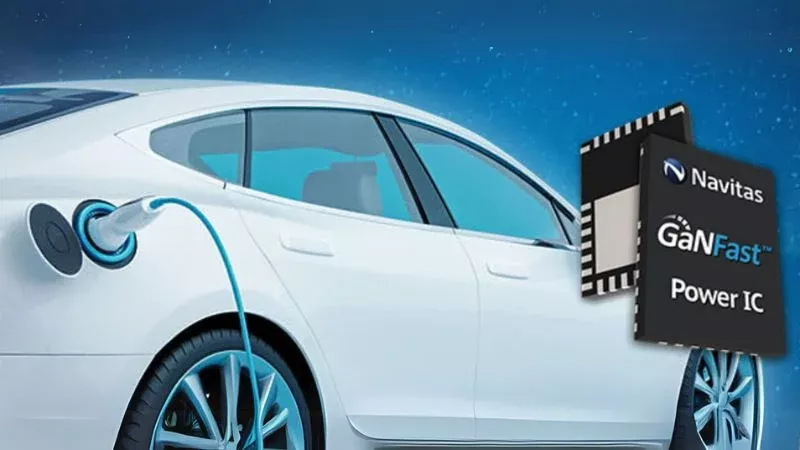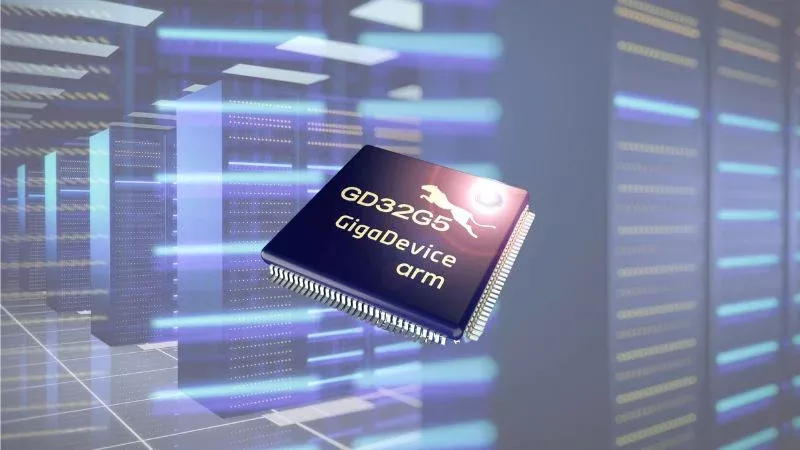Navitas, GigaDevice Join GaN and SiC for High-Power Use
Navitas Semiconductor and GigaDevice have formed a strategic partnership to develop fully integrated power and control platforms for next-generation power electronics. The companies have opened a joint R&D lab to combine Navitas’ GaNFast power ICs with GigaDevice’s GD32 microcontrollers, targeting high-efficiency systems in AI data centers, EVs, solar, and energy storage.
This collaboration focuses on solving a known challenge in wide bandgap system design: how to match high-speed GaN and SiC power switching with responsive, capable control systems. By building tightly integrated solutions, the two companies aim to make high-frequency, high-density power design more accessible.

The Navitas-GigaDevice partnership is intended for electric vehicles, renewable energy, and other high-powered applications. Image used courtesy of Navitas
Power Meets Control
GaN and SiC technologies offer faster switching, higher efficiency, and better power density than silicon. But they also require more precise control. High-speed topologies like bridgeless totem-pole PFC converters operate at frequencies that traditional MCUs can’t always keep up with. The joint lab will focus on aligning microcontroller performance with the switching capabilities of GaN and SiC devices.
Navitas’ GaNFast ICs integrate multiple functions—GaN FETs, gate drivers, logic, and protection—onto a single chip. This integration reduces parasitics and improves switching speed. The company’s portfolio includes single and half-bridge ICs, supporting a wide range of topologies and power levels. The chips are used in high-volume mobile chargers but also in demanding applications like a 3.2 kW CRPS and an 8.5 kW power supply for AI servers, meeting 98% efficiency and ORv3 standards.
Meanwhile, GigaDevice brings a well-established general-purpose MCU platform. Its GD32 line, based on the ARM Cortex-M7, provides fast processing and high I/O performance, as well as features like large on-chip memory and advanced timers. These are important in digitally controlled power systems where timing and coordination are fundamental. The company has already shipped over 2 billion units and has a strong presence in industrial automation, motor control, and power management.

An example of GigaDevice’s GD32 series. Image used courtesy of GigaDevice
The lab will co-develop hardware and firmware, reference designs, and system-level application examples to help engineers build power stages faster. This will include support for EMI reduction, thermal optimization, protection algorithms, and fast transient response, all of which are common challenges in WBG design.
Targeting Key Growth Sectors
The partnership will initially focus on four key sectors where system performance and energy efficiency are increasingly tied to smarter power conversion:
- AI Data Centers: AI workloads drive high power demands. Power supply designs must hit efficiency and density targets to reduce cooling and rack space. Navitas’ high-power GaN and SiC platforms already support this, and GigaDevice’s MCUs will help optimize digital control for faster response and better thermal handling.
- Electric Vehicles: EV powertrains need lighter and smaller components without sacrificing performance. GaN is well-suited to onboard chargers and DC-DC converters. Optimized MCUs can improve power-stage control, accelerate switching, and enable advanced safety features. GigaDevice and Navitas plan to jointly support OEMs looking for integrated platforms.
- Solar Power: Efficiency and MPPT performance are critical in solar inverters. Integrated MCU and GaN solutions can shrink inverter size while boosting conversion efficiency. The lab’s work will support new system architectures aimed at residential, commercial, and utility-scale solar.
- Energy Storage: Storage systems need fast, bidirectional converters for charging and grid interaction. GaN’s switching speed allows for tighter control over charge cycles and thermal performance. Combined with GigaDevice’s MCUs, this could improve round-trip efficiency and lower BOM costs by reducing external components.
The joint lab will also develop design tools and resources to reduce time-to-market and ease the learning curve for engineers moving to GaN and SiC. The companies plan to provide full system reference designs covering power, control, sensing, and protection targeted to these applications.
From a market perspective, the partnership also helps both companies expand. Navitas gains deeper access to the Chinese industrial and automotive sectors, where GigaDevice has a strong foothold. GigaDevice, in turn, can offer more complete system solutions in power-hungry sectors like EVs and data centers.
The companies have confirmed plans to release co-developed solutions later in 2025. These will include firmware stacks and hardware designs that developers can adapt to their specific applications.
Sign up to our newsletter
Receive our latest updates about our products & promotions
